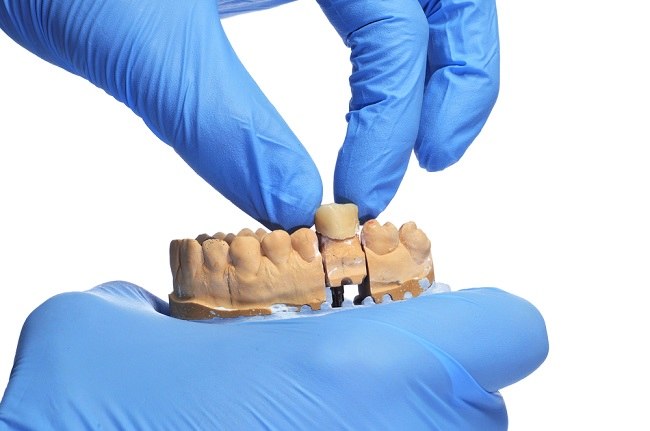Skin diseases around the eyelids can be caused by various things, ranging from irritation, allergies, infections, to cancer. Some of these diseases are mild and can heal on their own, but some are dangerous and need to be treated immediately.
The skin around the eyelids is rich in blood vessels, but the skin around the eyes is generally very thin, smooth, and has little fat tissue. In addition, like the skin on other parts of the body, the skin around the eyelids does not escape from various diseases and health problems.

Diseases of the skin around the eyelids usually cause symptoms in the form of a rash or bumps, sore, painful, itchy and swollen eyes, until the skin around the eyes looks dry or more dull and blackish.
Various Skin Diseases Around the Eyelids
Here are some common skin diseases around the eyelids:
1. Atopic dermatitis
Atopic dermatitis is a skin disease that can occur as an allergic reaction to certain substances or materials. This skin disease can appear around the eyes when the eyes are exposed to several allergens or allergy triggers, such as:
- Sap, rubber, or plastic
- Contact lens
- Personal care products and make up, including eye makeup, moisturizer, pan cleaner, or shampoo
- Certain metals, such as nickel which can be found in tweezers or jewelry
- Medications, such as antibiotics and nonsteroidal anti-inflammatory drugs (NSAIDs)
- Preservative in various products, including eye drops
- Pollution, such as dust and cigarette smoke
- Pet dander or insect bites
- Perfume
Atopic dermatitis or eczema are generally more at risk in people who have a history of allergic diseases, including asthma, allergic rhinitis, or allergic conjunctivitis.
In these patients, the symptoms of eczema in the eyes may recur when they are exposed to various allergenic factors. When relapse, allergies in the eye can make the eyes feel itchy, red, dry, and swollen.
2. Irritant contact dermatitis
Irritant contact dermatitis is also a common skin disease around the eyelids. This condition can occur when the area around the eyelids comes into direct contact with substances that can cause irritation to the skin.
There are several factors that can trigger the symptoms of irritant contact dermatitis around the eyes, including:
- Extremely hot or cold temperatures
- Extreme humidity or very dry air
- The habit of frequently rubbing or scratching the eyes
- Irritating chemicals, such as chlorine, detergents, and alcohol
Just like allergic contact dermatitis and atopic eczema, this skin disease around the eyelids can also cause itching, redness, stinging, and swelling around the eyes.
3. Blepharitis
Blepharitis is the medical term for inflammation or irritation of the eyelids, along the edges of the eyelids. Blepharitis is usually experienced in both eyelids and is a fairly common eye disorder.
This skin disease around the eyelids occurs when the oil glands at the base of the eyelashes become blocked, causing irritation and inflammation. Blepharitis can sometimes occur together with ulcers in the eye or chalazion.
There are several factors that can make a person more at risk of developing blepharitis, namely:
- Seborrheic dermatitis or dandruff on the scalp and eyebrows
- Dry eyes
- Rosacea
- Allergic reactions, such as allergies to eye drops, contact lens solutions, or eye makeup
- Lice or mites on eyelashes
- Infections, eg bacterial conjunctivitis
Blepharitis can cause the eyelids to feel itchy, red, swollen, oily, scaly, and crusty. In addition, blepharitis also often causes the eyes to feel very painful, sore, blurred vision, easy to glare, and the eyes are difficult to open or close.
4. Herpes zoster in the eye
Herpes zoster in the eye or herpes zoster ophthalmicus is a disease caused by the herpes virus that causes chickenpox. This disease can cause complaints on the skin, in the form of a rash that blisters and swelling.
Herpes zoster can attack the eyes and the skin around the eyelids. This disease is generally more at risk in people who have had chickenpox, or in people who have a weakened immune system due to an illness, such as HIV/AIDS, malnutrition, or increasing age.
In addition to a rash, herpes in the eye can also cause other symptoms, namely severe pain or stinging that feels like throbbing in the eye, red and swollen eyes, blurred vision, and easy glare.
Herpes zoster in the eye needs to be treated properly, because in some cases, this condition can cause serious vision problems or even blindness.
5. Xanthelasma
The next skin disease around the eyelids is xanthelasma. This disease is characterized by yellowish plaques or patches around the corners of the eyelids. Plaque is formed due to the accumulation of fat under the skin around the eyes.
Although harmless and painless, this condition can interfere with appearance and reduce a person's self-confidence.
Xanthelasma more common in people who have high cholesterol levels, obesity, and liver disease. Sometimes, xanthelasma It can also be a risk factor for a person to develop heart disease.
6. Tumor or eye cancer
Tumors or cancers that appear around the eyes will usually appear as lumps, rashes, or moles that quickly expand and enlarge. Some tumors around the eyes are benign and harmless, but sometimes they can be malignant. This malignant tumor is called eye cancer.
Eye cancer is generally more common in people who are often exposed to the sun for too long or because of exposure to nuclear radiation. Eye melanoma is a type of cancer that can appear on the skin around the eyes. However, this cancer more often attacks the inside of the eyeball.
Diseases of the skin around the eyelids are generally harmless if they heal on their own, subside with self-care at home, or if they don't interfere with vision.
However, if you experience various symptoms of skin diseases around the eyelids that don't go away, get worse, or cause visual disturbances, this condition needs to be checked by a doctor immediately.
This is important so that the doctor can determine the disease you are experiencing and provide the right treatment before serious eye complications occur.









